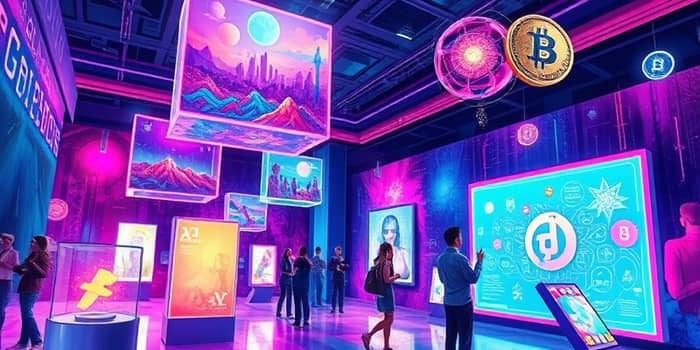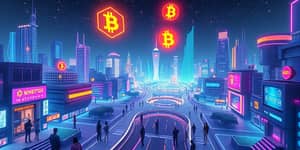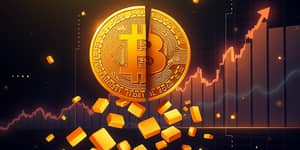
The world of non-fungible tokens has exploded into the mainstream, reshaping how art, music, gaming, and real-world assets are perceived and traded. As we navigate a landscape marked by rapid innovation and shifting dynamics, understanding the latest trends is crucial for collectors, creators, and investors alike.
By 2025, the NFT market is poised to generate staggering revenues, though forecasts vary. One projection anticipates $608.6 million in annual revenue, while a more conservative outlook suggests $504.3 million with a -5.0% annual growth rate. These figures reflect both extraordinary potential and lingering uncertainty.
Despite mixed forecasts, the global user base has stabilized near 11.6 million participants, with a penetration rate hovering at 0.15%. Such numbers indicate that, while explosive growth may be tapering, a committed community remains dedicated to digital collectibles.
After a turbulent start to 2025, NFT trading volumes saw a resurgence. June recorded a 10% uptick in sales, surpassing $127 million, while May’s rebound reached $430 million in total transactions. These spikes demonstrate renewed confidence among active traders and a willingness to reengage after earlier pullbacks.
Such performance highlights the resilience of top-tier collections, driven by strong branding and passionate communities.
Several innovations are redefining how NFTs are created and utilized. Hybrid NFTs bridge the digital and physical realms, offering proof of authenticity for luxury sneakers, watches, and fine art. For example, Nike’s Cryptokicks link blockchain tokens to real-world footwear, ensuring provenance and exclusivity.
These trends underscore a shift toward tangible benefits and exclusive experiences that extend beyond mere speculation.
Several key drivers are propelling the NFT ecosystem forward:
Combined, these elements create a feedback loop that sustains interest and confidence, even amid price swings.
However, the journey has not been without obstacles. The first quarter of 2025 saw a dramatic 63% decline in sales volume, prompting some skeptics to question the market’s longevity. Intensifying regulatory scrutiny and concerns over environmental impact add further complexity.
Market volatility remains a persistent challenge, with rapid price swings deterring risk-averse participants. Additionally, the rise of low-quality or plagiarized collections has led to increased caution among newcomers.
For the ecosystem to thrive, stakeholders must address these issues through improved standards, transparency, and sustainable practices.
A handful of platforms and networks dominate NFT trading and development. Immutable, well-known for its gaming-focused blockchain, facilitated millions of dollars in transactions for decentralized games and virtual assets. Meanwhile, marketplaces like OpenSea and Rarible continue to serve as primary hubs for minting, buying, and selling tokens.
These platforms exemplify a diverse ecosystem of creators and collectors, each driving innovation in unique ways.
Looking ahead, the NFT landscape is expected to pivot from pure speculation towards sustainable utility and deeper integration with real-world applications. As technologies mature, we may see:
As the market stabilizes, focus will likely shift toward enhanced interoperability, cross-chain projects, and real-world asset tokenization. Artists and brands exploring hybrid models will lead the charge, demonstrating how blockchain can authenticate and enrich physical goods.
Ultimately, success will hinge on fostering trust and delivering genuine value. By prioritizing quality, strengthening communities, and embracing regulation, the NFT ecosystem can mature into a resilient and inclusive digital frontier.
References













